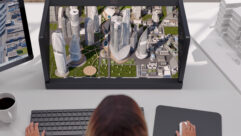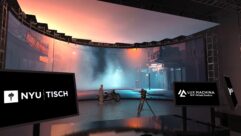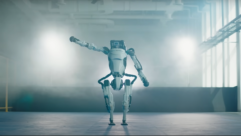All of it Now (AOIN) , a team of technologists and content creators based in Los Angeles, leveraged Sony’s Spatial Reality Display (SRD) to create an AR-enabled presentation of Disney’s Encanto at the Hollywood Bowl.
AOIN learned of the SRD upon seeing it showcased at Sony’s NAB booth. AOIN’s Chief Technology Officer Berto Mora commented, “Many of the people we work with in the industry and in the virtual production world told us we had to check out Sony’s new display. It was one of the coolest things I’ve seen.”
The SRD’s main capabilities include the showcasing and visualization of 3D content without the need for special glasses, virtual production usage, and the opportunity to showcase massive content in a realistic way from a tabletop device. Shortly after seeing a demo of the SRD, AOIN purchased a unit for in-house use.
Some of the SRD’s features that help set it apart from other virtual production units include a real-time rendering algorithm, a micro-optical lens, easy integration and a proprietary high-speed vision sensor. Mora relayed her appreciation of the SRD’s eye-sensing technology by saying, “The gaze tracking of your eyes lets you know this isn’t a conventional display. The real-time perspective shift is a huge selling point that makes it much more interesting. This feature complements XR environments nicely.”
Co-founder of AOIN Danny Firpo commented on using the SRD to help tackle some of the Hollywood Bowl’s unique hurdles. saying, “First, we used the Spatial Reality Display to help visualize the Hollywood Bowl venue. Additionally, because the content is motivated by projection, many of the effects used in the AR broadcast were particle-based. Sony’s display provided visuals in both a 2D and a 3D space, enabling a better understanding of the paths that the particles were taking, which allowed us to spatialize and contextualize them.”
“The display looks more realistic and presents content more accurately when you’re creating it. It provides a different effect when compared to wearing glasses,” Mora explained. Firpo added, “As somebody who already wears glasses every day, there’s a fatigue layer and added friction. The weight of the glasses on your face limits the amount of time you can use them. It can also cause strain on your neck, and glasses can hurt your face and make you sweat. There’s also the potential for dirt and smudges to present themselves, which can degrade the viewing experience and affect the image quality.”










